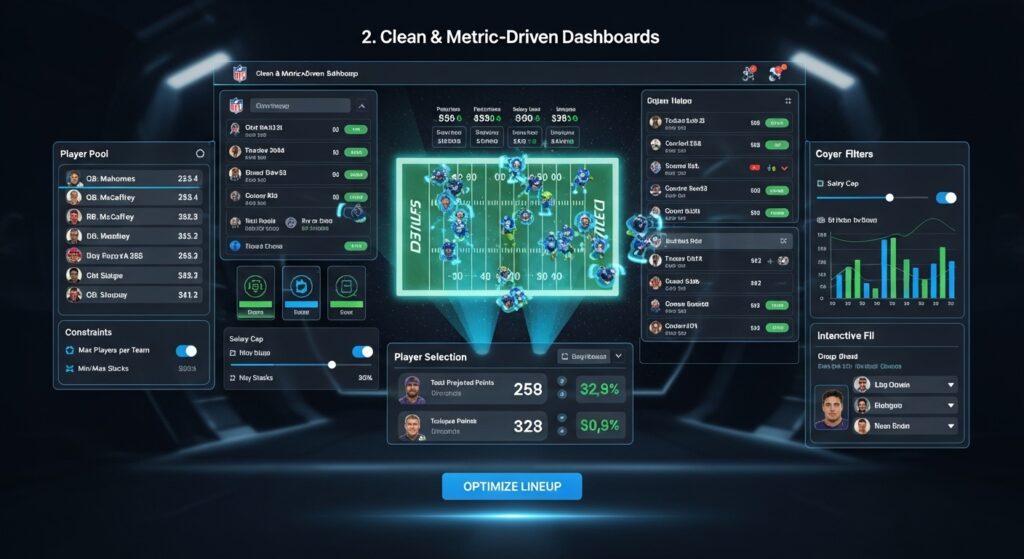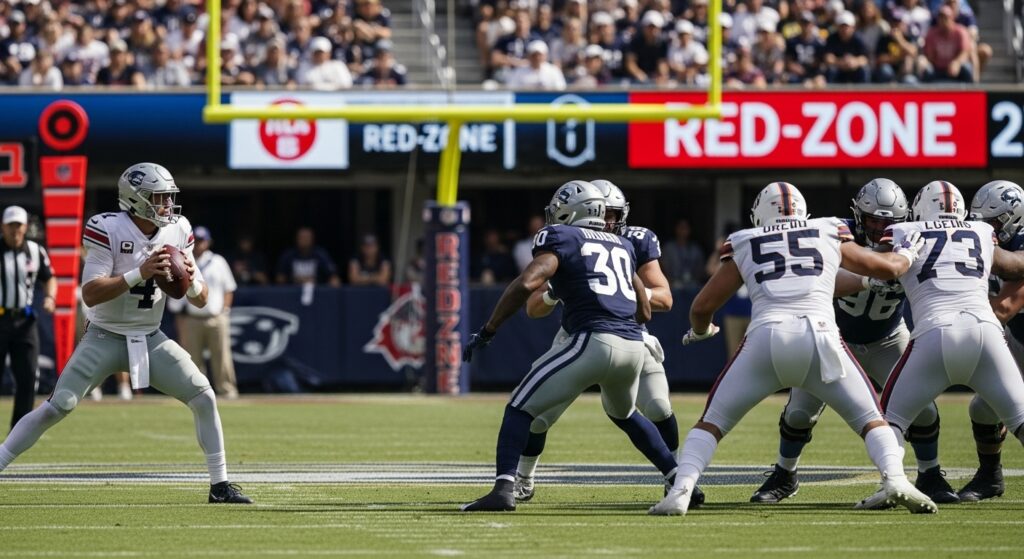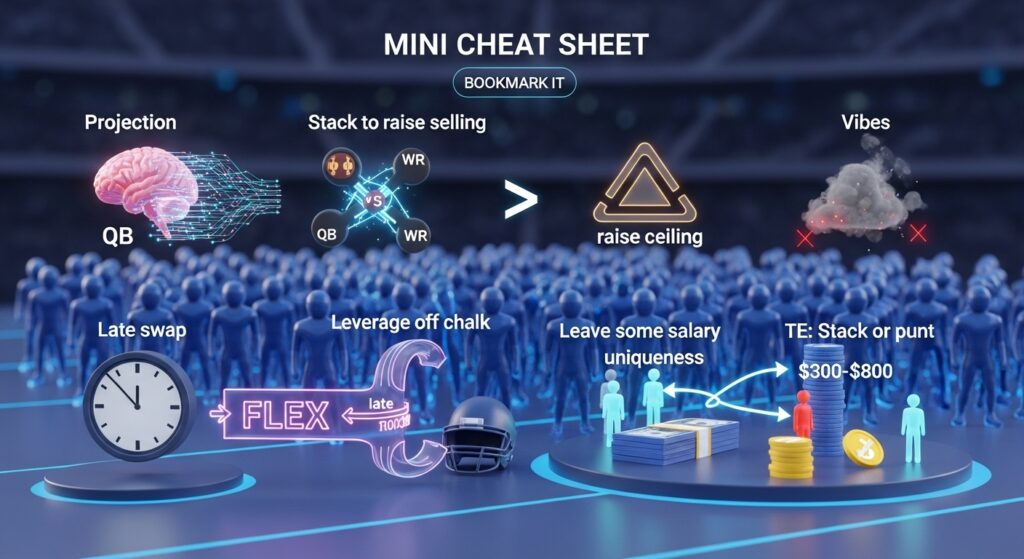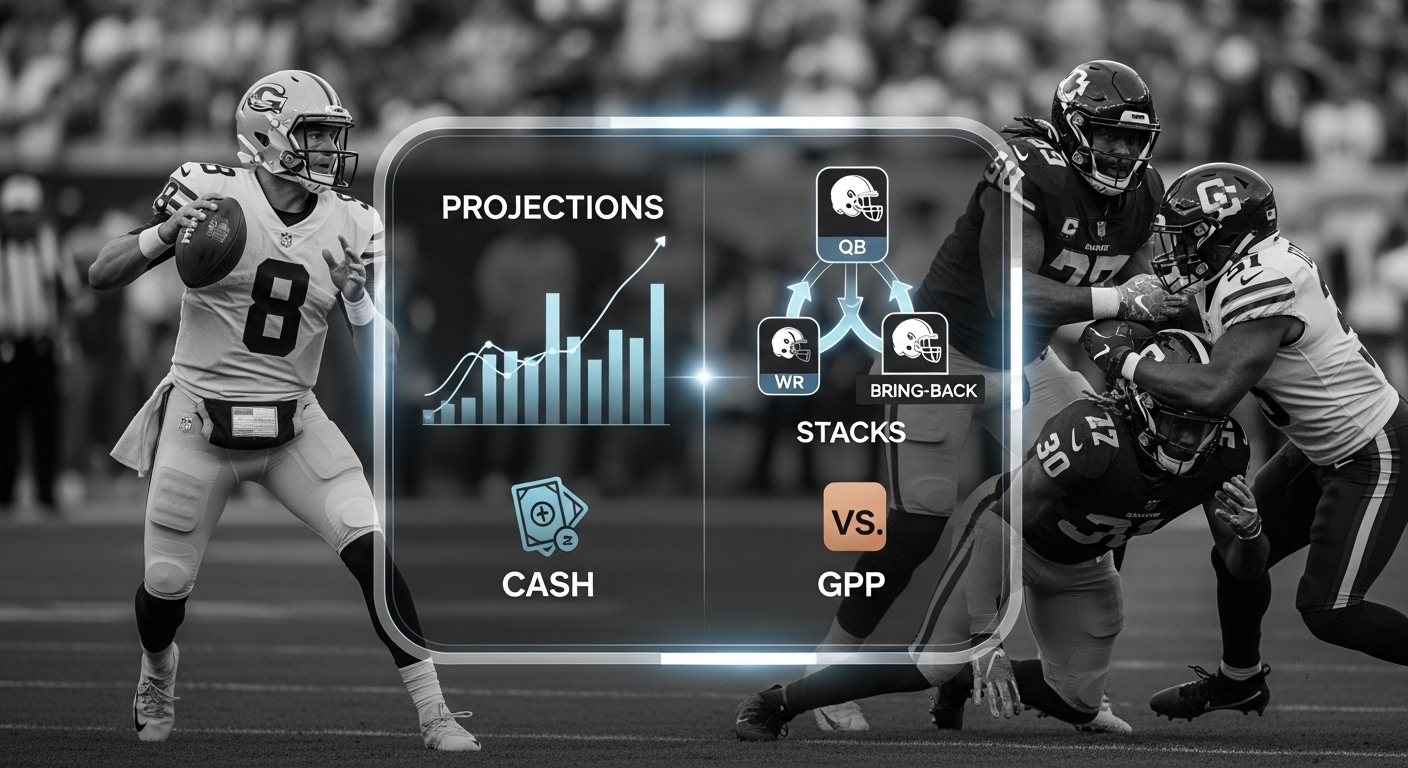As someone who’s been building DFS lineups for 10+ years, here’s my quick take: a good nfl lineup optimizer is a tool, not a magic wand. In my experience, it shines when you feed it clean projections, clear rules, and a sane brain. I use it for fantasy football, DFS salary cap puzzles, stacking, ownership fades, and late swap moves. That’s the gist. Simple, not easy.
Quick Answer: How I Build a Strong Lineup Fast

- Start with projections you trust. If your numbers lie, your lineup will too.
- Stack smart. QB + WR (and maybe TE) for tournaments. Bring-back with a correlated opponent.
- Play it safe in cash, weird in GPP. Cash = floor. GPP = leverage and ceiling.
- Leave salary on the table (up to $300–$800) in large-field GPPs to get unique.
- Late swap. If your early guys flop, pivot to lower-owned volatility in late games.
- Set rules. No RB vs. your defense. Limit WRs from the same team unless it’s a pass-heavy stack.
- Use groups. Tie a WR to your QB. Cap exposure on fragile players.
DFS Basics (Why We Even Do This)
I get asked why I care about contest types and correlation. Because the game is not just picks. It’s structure. If you’ve never dipped into the scene, read about daily fantasy sports first. It helps to know why a chalk RB at 35% ownership can be right in cash but awful in a 100k-entry GPP.
What the Optimizer Actually Does (And Why It’s Not Cheating)
Under the hood, most optimizers use math like integer programming to pick a set of players under a salary cap that gives the highest projected points. Think of it like packing a suitcase where each shirt has a point value and a cost. It’s not “smart” by itself. It’s obedient. If your projections are wrong, it will confidently optimize you straight into mediocrity.
Where I Get My Inputs
I pull a blend of projections, snap rates, target shares, pace, and injury context. And I peek at week-to-week sports trends to catch shifts in usage before the field adjusts. One week of noise? Maybe. Two weeks? That’s a nudge. Three weeks? That’s a role change.
Cash vs. GPP (Keep the Rules Different)
In cash games, I play boring. Like beige-wall boring. Give me a high-volume RB, a safe WR with targets, and a QB that runs a bit. In tournaments, I lean into variance: stacks, bring-backs, and cheap WRs who only need two deep targets to get there.
| Slot | Cash Build | GPP Build | Why |
|---|---|---|---|
| QB | Mid-price, stable | Stacked with 1–2 pass catchers | Ceiling comes from correlation |
| RB1 | Workhorse, high snap % | Leverage off chalk RB | Fade the herd for leverage |
| WR2/3 | Target volume | Deep-threat, volatile | Ceiling beats median in GPPs |
| TE | Cheap, 5–7 targets | In the stack or punt | TE is gross; stack or save |
| FLEX | Highest floor under salary | Late-swap slot for pivots | Control of final move |
| D/ST | Pressure + bad QB | Low-owned, sack upside | TDs are random; chase sacks |
Real Game Context Matters (Red Zone + Third Downs)

I care about who actually touches the ball when it counts. Red-zone usage and third-down work tell me more than raw yardage. When I skim game notes like these Browns vs Seahawks player stats, I’m hunting for, “Who gets the ball at the 5?” That role prints money.
Pace, TV Windows, and Late Swap
Timing matters. Games in the late window give me swap options if my early guys faceplanted. Also, faster-paced matchups mean more plays, more chances. There’s a reason everyone complains about why a 60-minute game takes forever—yeah, like why 60 minutes takes 3 hours. More plays. More ads. More tilting. But also more opportunity to catch up.
College Clues Help on Injuries and Roles
I’ll scan depth charts when injuries pop up. A rookie who handled everything at LSU? That’s a flag. You can read tea leaves from blurbs like these LSU football depth chart notes. It’s not gospel. But it’s guidance when pricing lags usage.
My Weekly Workflow (Short and Not Very Pretty)
- Build a baseline projection set. I tweak for weather, injuries, and coaching weirdness.
- Tag games for stacking. Circle the sneaky totals that could pop.
- Set optimizer rules and limits. Group stacks. Cap exposure on fragile players.
- Run 100–300 lineups. Kill the obvious dupes. Keep the weird good ones.
- Wait for inactives. Re-run. Then pace the room until lock.
Common Traps I See Every Week
People lock bad chalk because “everyone has him.” Nope. Eat good chalk (workhorse RB vs. broken defense). Fade bad chalk (part-time WR with one big play last week). I rant about this a lot in my own fantasy tips notes: play lineups with a story, not a wishlist of famous names.
When I Press the Button on the nfl lineup optimizer
I run it when I’m clear on the slate’s story. High-total shootout? Stack it with a bring-back. Ugly slate? Correlate defense with RB, and accept weird scores. The point is: the tool helps me find the best shapes of that story at scale, not invent a story for me.
The Human Part the Tool Can’t Do
Coaches lie. Beat writers hype. Weather shifts late. Only you can weigh that mess and decide, “Okay, bump this RB 8% because the backup is out.” That’s why two people can use the same software and one finishes 89,532nd while the other ships a GPP.
A Word on Floors, Ceilings, and Ownership
Here’s how I think: floor matters in cash. Ceiling plus leverage matters in GPPs. If a WR is 4% owned with deep-ball usage, he’s live for 25 points on two plays. That’s where an nfl lineup optimizer can’t feel fear. It just follows your inputs. You choose the leverage.
Mini Cheat Sheet (Bookmark It)

- Projection > Vibes: Gut is fine. Projection wins long-term.
- Stack to raise ceiling: QB + WR + bring-back is still king.
- Late swap: Keep one late player flexible in your FLEX.
- Leverage off chalk: Fade fragile chalk; attack with correlated pivots.
- Leave some salary: Uniqueness matters in big fields.
- TE: Stack or punt. Middle pricing is a trap more often than not.
- D/ST: Sacks and pressure rate over matchup narratives.
A Quick Note on Terms (No Jargon Gatekeeping)
- Stack: Pair players whose points rise together (QB + WR).
- Bring-back: A player from the other team in that same game.
- Chalk: Players with high ownership.
- Leverage: A pivot that benefits if chalk fails.
- Late swap: Changing players in games that haven’t started yet.
A Tiny Case Study (Why Correlation Works)
Last season I stacked a mid-tier QB with his WR1 and TE. Game shot past the Vegas total. All three smashed. If I had picked them separately without stacking, okay score. Stacked? Leaderboard. That’s the whole trick: let points come in clumps.
One Last Sanity Check Before Lock
I always ask: does this lineup tell a story? If QB hits, do I benefit in two slots? If early chalk flops, do I have late pivots? Did I leave myself an extra $200 in salary so I can switch to a lower-owned WR if needed? If “no” to any of that, I rerun and fix it.

Extra Reading If You Like Nerd Stuff
If you want to go deeper on modeling and contest theory, make peace with the math and watch how optimizers solve constraints. It’s not scary. Just picky.
Game Logs and Trend Surfing
I do skim weekly roundups for spots that the field will miss next week. Stuff like fresh usage nuggets pop up often in curated sports trends feeds, and those little role shifts are where edges are born.
FAQs
Do I need to pay for projections, or can I DIY with news and vibes?
You can DIY, but paid projections save time and smooth out bias. I still tweak them, but I don’t start from scratch.
How many stacks is too many in one lineup?
For NFL, I like 2–3 correlated pairs: primary QB stack + bring-back, maybe a secondary mini-stack (RB vs. WR from another game).
Is leaving $1,000 of salary crazy?
In large-field GPPs, not crazy at all if it makes your lineup unique and keeps ceiling. In cash, I try to spend almost all of it.
Should I ever play two RBs from the same team?
Rarely. It can work if one is the pass-catching back and the team skews that way, but it’s thin.
How many lineups should I enter if I’m new?
Start with one or two. Learn late swap. Learn stacking. Then scale up. Volume without process is how bankrolls evaporate.

I’m Oliver Scott, and I live to bring every sports moment to life. Get breaking multi-sport news, in-depth match highlights, fantasy tips, athlete spotlights, and the latest trends right here.

